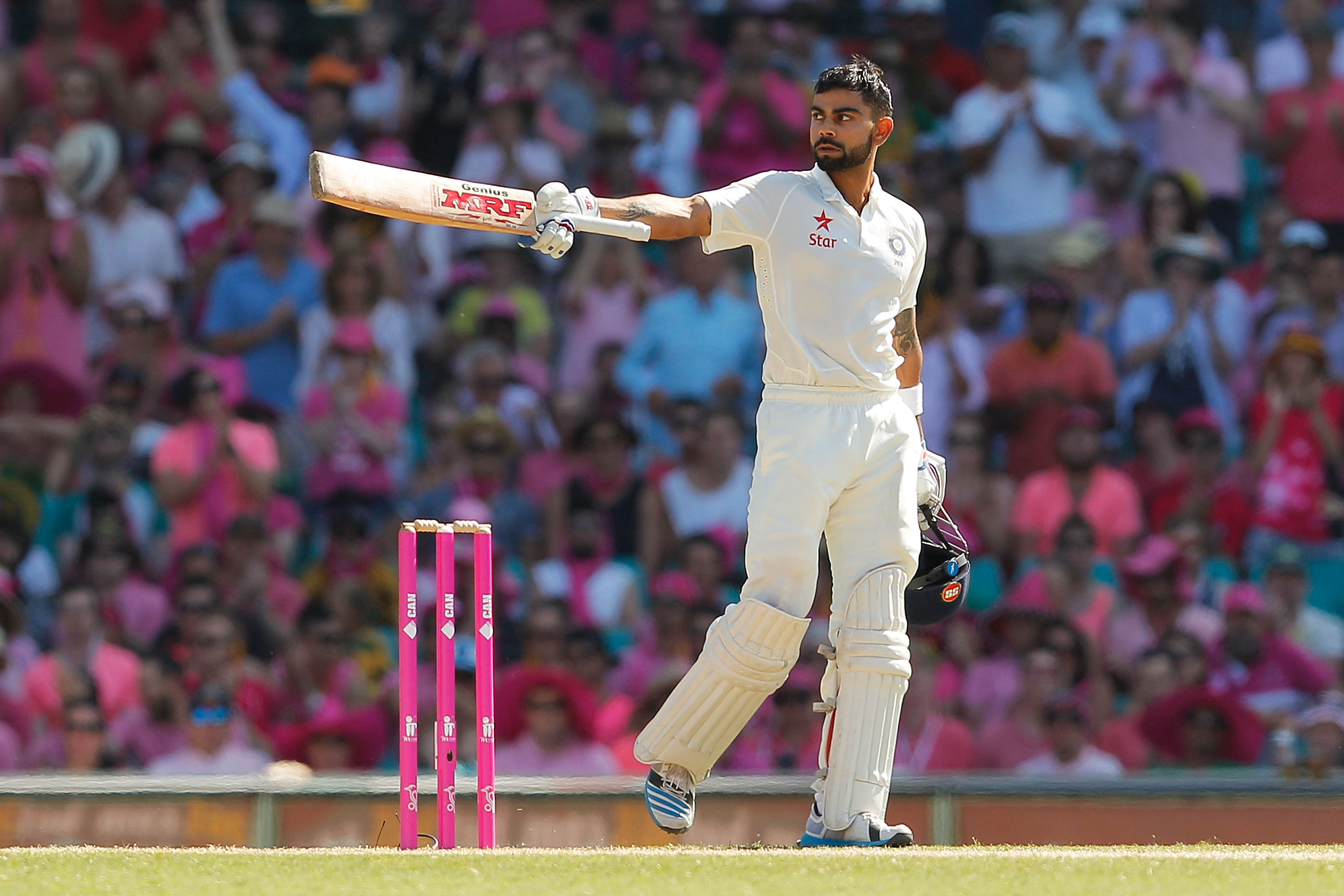Virat Kohli: The Test captain India always needed

Virat Kohli’s decision-making during the recent West Indies series has shown what Indian Test cricket has been sorely missing. We look back at how things were once colorful in the white-uniformed format, and how the Indian skipper has turned the clock back with his leadership.
It was an Indian summer, but the sun shone over the subcontinent as if spring had come early when Australia came visiting in 2001. But it was dark days for Indian cricket after it had slipped into a decade of mediocrity before Sourav Ganguly took over the reins. All the doubts were smashed to bits on March 15, 2001 when the country witnessed an epic turnaround at the Eden Gardens. From inevitable defeat, VVS Laxman and Rahul Dravid gave every Indian fan enough to stand up and applaud. But Ganguly’s decision to declare and set Australia a target of 384 surprised many. Few expected the team to win and now when a draw was possible, why declare the innings? It was a good surface to bat on, and the mighty Aussies who were on a 17-Test winning streak were capable of doing anything. But India did not show any nerves as they ran through the star-studded Aussie batting line-up.
It defined India’s approach in Tests for the next decade, mostly under the captaincy of Sourav Ganguly. Under his leadership, the Indians shed their bad tourist image as they took England and Australia on their own turf, winning Tests, levelling series. Surely, their attacking intent was not always met with success like losing the series 1-2 to Australia at home in 2004. But the team was adventurous, imaginative and most importantly, entertaining. Bold decisions remained a part of our game plan even after Ganguly was stripped of his captaincy. It was the same approach that yielded India their first Test series win in England under Rahul Dravid as they refused to surrender their 1-0 lead throughout the series. Despite losing the third Test of the 2008 series in controversial fashion, the Indians replied with a resounding victory in Perth under Anil Kumble’s captaincy which exemplified the way Indians played Test cricket. But the captaincy changed hands to MS Dhoni, and soon, the word “Controlled-Aggression” started being used frequently.
While the sun shone bright, India walked off with innings victories and dominated entire series. But when they lost, they lost badly and what was more agonizing was to see the team go down without a fight. 2011 of all, was a year to forget for every Indian fan as England toyed with India humiliating them with a 4-0 series result.
Then came the Australian summer of 2011, and the Aussies handed India another 4-0 whitewash. It clearly smacked of a lost hunger, the urge to kill off the match before things headed towards a dull draw. This was perfectly depicted during the third Test of West Indies tour in 2011, when India were set a target of 180 to chase down in 47 overs on what seemed liked a decent wicket. India were already 94/3 just before tea, and with 15 overs remaining, Dhoni agreed for a draw rather than going for the win.
The conservative tactics continued even though India’s results overseas improved in the next four years, and Dhoni still holds the lowest win percentage (20%) for an Indian Test captain abroad. His field positioning when opponents were on back foot was questionable as it was aimed at containing the run flow rather than picking up wickets. It was criticized by many, but Dhoni stuck to his philosophy concentrating too much on the process rather than the result. It was evident that he would be succeeded by Virat Kohli who was named Vice-Captain of the team in 2012. When it happened in 2015 during the Australian tour, there was a stark contrast between both of their styles. After taking up the captaincy, Kohli’s tactics showed that the man wanted to force results rather than wait for things to unfold. He showed it in his second Test as captain as his counter-attacking knock of 141 against Australia brought India close to chasing a target of 364.
He also led India to their first Test series win outside in his first series as the captain beating Sri Lanka 2-1 in 2015. His captaincy at home was what was expected for an Indian captain - India trounced South Africa 3-0. It was an indication of things to come as India came back after losing the first Test to win the series against the Lankans. But with the recent West Indies series, Kohli’s plans have been made clear. In Anil Kumble, the Delhi-born batsmen has found a coach and a tactician who shares his aggression, and it has shown during this series. The Indians capitalized on every single mistake West Indies made, and the best part of it has been Kohli’s field placements when West Indies were trying to steady their innings. While Dhoni made the mistake of setting his fields far away, Kohli excelled in these situations piling up pressure with closed in-fields and employing a forward-short leg frequently. His slip placement though unorthodox has worked well when he asked his bowlers to bowl back of the length deliveries to force an outside edge from the batsmen.
His decision to declare the innings after India’s lead extended beyond 300 clearly shows that his captaincy is always about results much contrary to what critics had to say after the second Test draw. Though West Indies submitted themselves to the Indians in the second innings making Kohli the first captain to win two Tests in the Caribbean, it was his decision to declare the innings that brought back memories of Ganguly’s captaincy.
This approach of playing risky cricket, though not always successful, will ensure we win more than we lose. More importantly, Test cricket’s likely No. 1 team needs to be its greatest ambassador - aggressive cricket that reminds you of the Invincible Aussies of the last decade. In fact, the baton has not passed over from that team and remains unclaimed. This Indian team has all the qualities needed to take over that mantle - an aggressive captain, a capable pace battery, world-class spinners, and an all-rounder.
The victory in West Indies could be the start of another era when Indians are feared abroad. It’s a change in the mental make-up that was necessary, and Kumble’s arrival appears to have catalyzed the spark that Kohli already possessed. Better times for Test cricket await us.
